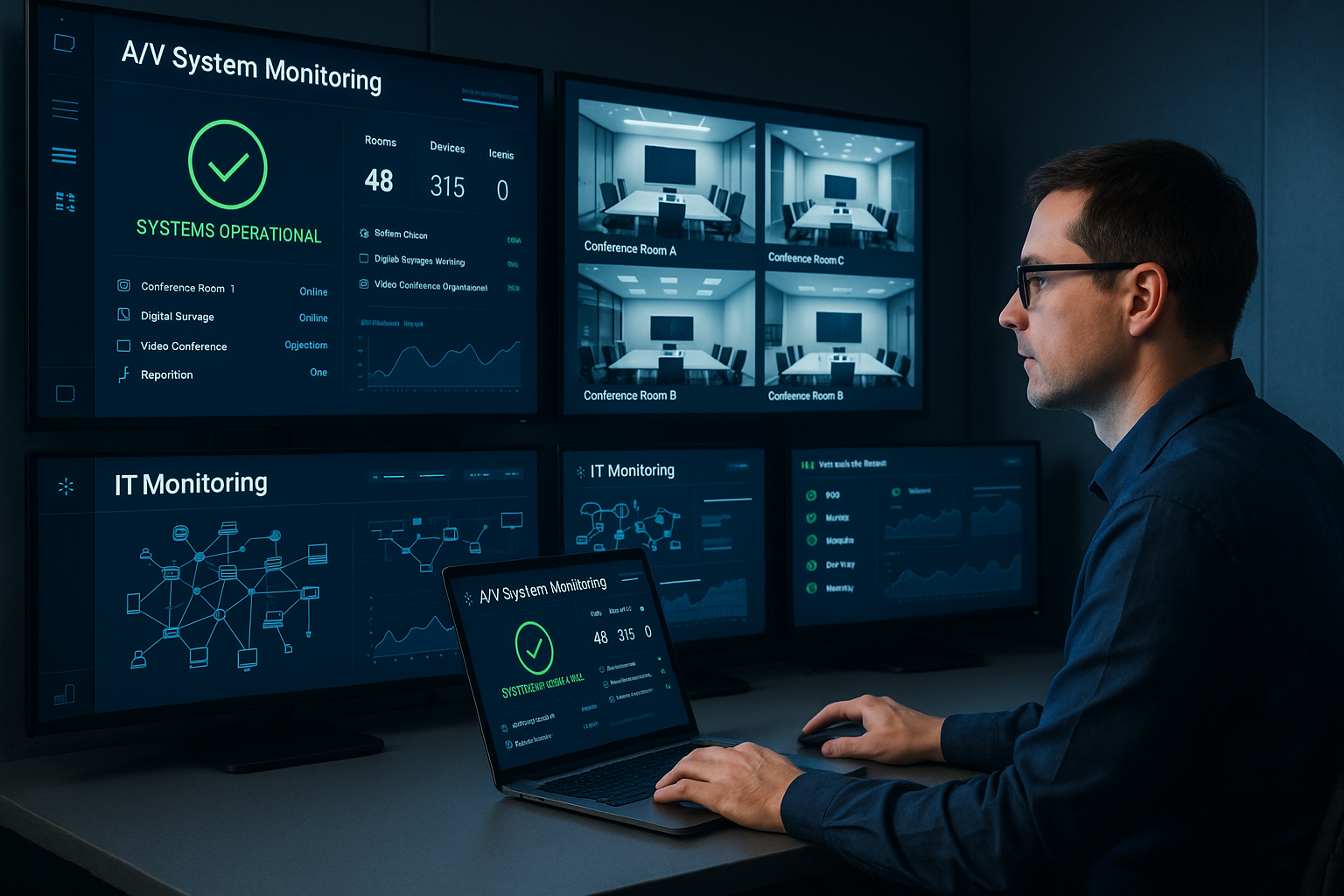Why A/V Systems Require Proactive Monitoring and Management
Not that long ago, audio/visual components and IT systems were distinct elements of the corporate environment that intersected in only limited ways. Each had its own connectivity requirements and was administered by specialists who only understood their domain.
Those distinctions are virtually eliminated now. Audio and video conferencing systems, digital signage and more now attach to the data network. As a result, organizations are increasingly moving A/V under the IT umbrella.
There are good reasons for making this move. One is budget driven. Converging A/V and IT can simplify installation and increase operational efficiency. Streamlining operations and eliminating redundancies can lead to lower long-term maintenance costs.
Security is another concern. A/V components can be a security risk just like any other device on the network, and highly regulated industries must also be vigilant about protecting the privacy of sensitive data. When A/V systems are converged with IT, they become subject to the same security policies and controls as other network-connected devices.
A/V and IT Convergence: What’s the Problem?
While IT-led A/V management can improve security and cost-efficiency, it often results in reactive troubleshooting, increased downtime and poor user experience. IT teams that are adept at managing the data center may not have the knowledge, tools and processes to deal with an experience-driven technology.
Here’s one example. An organization might have a large, well-outfitted team meeting space equipped with the latest conferring and collaboration gear. It may only be occupied during quarterly “all-hands” meetings or training sessions. Meanwhile, the A/V and conferencing equipment is quietly downloading and installing patches and updates pushed out by manufacturers. While these updates are critical, they can sometimes cause incompatibilities that prevent the various components from working together properly.
Meeting coordinators go into the space, turn on the equipment and find that it’s not working. Their only option is to open a ticket with the IT help desk and wait for assistance.
Solution: Proactive Monitoring and Management
The IT team could visit every meeting and conference room regularly to test the A/V equipment. Regular testing can help ensure that teams have the resources they need when they need them, without calling for support.
Proactive monitoring and management offers a better approach. By bringing A/V platforms and monitoring tools into the IT ecosystem, IT teams can detect problems and take action before users complain. They can also perform proactive maintenance to ensure that everything is working properly and meeting SLAs for performance and uptime.
Centralized monitoring of A/V using a unified software ecosystem streamlines IT workflows, enables greater automation and reduces administrative overhead. It also allows IT teams to manage A/V traffic, which can consume a lot of bandwidth and cause network congestion.
There are security benefits as well. Centralized monitoring gives IT teams a holistic view of network traffic, enabling them to identify threats more effectively and reduce incident response times. They can also apply patches and updates more efficiently and ensure that A/V equipment remains in compliance with IT policies.
Roadblocks to True A/V and IT Convergence
Despite the benefits of A/V monitoring, IT teams sometimes push back against true A/V and IT convergence within a common monitoring ecosystem. They may point to the fact that existing network tools already track network-connected devices and argue that adding A/V management tools would only increase complexity. They may view A/V devices as endpoints that don’t require specialized tools.
There may be operational hurdles as well. A/V and IT teams have historically operated independently. Aligning their disparate processes can be challenging.
In our next post, we’ll dig further into these roadblocks and discuss ways to overcome them. We’ll also discuss why A/V and IT convergence is critical to maximizing the user experience.
Contact Liberty
For questions, contact your Liberty representative or feel free to reach us at support@libertyonline.com or at 800-530-8998.

